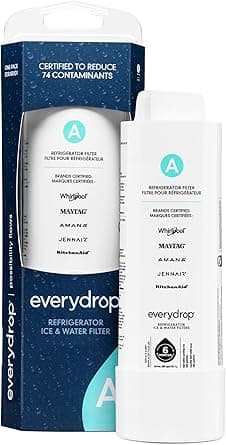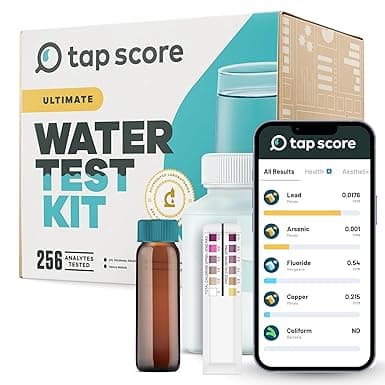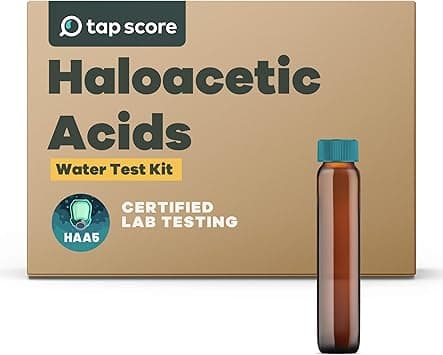Pinckney Tap Water Quality Report
Pinckney's water has 5 contaminants above EPA MCLGs. We recommend using a certified water filter.
Utility
PINCKNEY WATER SYSTEM
People Served
2,515
MCL Violations
0
Last Updated
Jun 1, 2022
Is Pinckney Tap Water Safe to Drink?
Pinckney's water has 5 contaminants above EPA health-based guidelines. We strongly recommend using a certified water filter to reduce exposure to these contaminants. Check our filter recommendations below for NSF-certified options that can remove the specific contaminants found in Pinckney's water.
The data below shows test results from PINCKNEY WATER SYSTEM, which serves 2,515 people in the Pinckney area. Water quality testing is conducted regularly and reported to the EPA. This report was last updated Jun 1, 2022.
Pinckney Water Quality Test Results
Key Water Quality Metrics
Contaminants Detected
⚠️ Contaminants Above EPA MCLG (5)
Dichloroacetic Acid (DCA)
What is Dichloroacetic Acid (DCA)?
Member of haloacetic acids (HAAs) that form as byproducts when chlorine reacts with organic matter
Health Effects
Health protective benchmarks for DCA are based on evidence of increased cancer risk and liver toxicity observed in animal studies. Adverse effects to the male reproductive system have also been associated with elevated levels of DCA in animal studies. The EPA classifies DCA as a likely human carcinogen.
Affected Organs
Common Sources
Uranium
What is Uranium?
Uranium is a weakly radioactive heavy metal found naturally in bedrock and used in nuclear weapons, some ceramics, electron microscopy stains, photography toners, and certain fertilizers. Uranium is weakly radioactive because all of its isotopes (Uranium-234, Uranium-235, and Uranium-238) are unstable. Ninety-nine percent of naturally existing uranium is in the isotope form uranium-238. The EPA has established a maximum contaminant level for uranium in drinking water in response to human and animal studies indicating kidney toxicity and and increased risk of cancer.
Health Effects
Health protective benchmarks for uranium are based on adverse kidney system effects observed in both humans and animals and an increased risk of cancer. Animal studies have also shown female reproductive system and developmental toxicity, as well as genotoxicity, related to uranium exposure.
Affected Organs
Common Sources
Gross Alpha (Excl. Radon and Uranium)
What is Gross Alpha (Excl. Radon and Uranium)?
Gross alpha activity is a measure of the total alpha particle activity in a water sample, excluding radon and uranium. It is used to assess the presence of radioactive contaminants in drinking water.
Health Effects
Exposure to high levels of alpha radiation can lead to an increased risk of cancer, particularly in the bones and other tissues where alpha particles can deposit energy.
Affected Organs
Common Sources
Total THMs
What is Total THMs?
Group of contaminants that form in drinking water systems when a disinfectant, typically chlorine, reacts with organic matter
Health Effects
Drinking water standards for total THMs are based on evidence of carcinogenicity in human and animal studies, as well as liver and kidney toxicity observed in animal studies. Individual THMs have been further associated with developmental, immune, spleen, and genotoxicity.
Affected Organs
Common Sources
Trichloroacetic Acid (TCA)
What is Trichloroacetic Acid (TCA)?
Member of haloacetic acids (HAAs) that form as byproducts when chlorine reacts with organic matter
Health Effects
Health protective benchmarks for TCA in drinking water have been developed based on liver toxicity and carcinogenicity observed in animal studies. EPA has classified TCA as a possible human carcinogen. Developmental toxicity has also been associated with exposure to TCA based on evidence from animal studies.
Affected Organs
Common Sources
Understanding the Data
This data comes from your local water utility testing. The bar charts compare detected levels against EPA's Maximum Contaminant Level Goal (MCLG). Contaminants above the MCLG are shown by default and may require filtration. All other tested contaminants are within safe levels and can be viewed by expanding the section above.
Recommended Water Filters for Pinckney
Based on Pinckney's water quality data, these NSF-certified filters are recommended to remove contaminants above EPA MCLGs.

Whirlpool Corporation
W11256135
NSF Certified:
Capacity
1001 gal
Filter Life
3 mo
Flow Rate
0.7 gpm
Removes 19 contaminants:
1,2 Dichlorobenzene, 1,4 Dichlorobenzene, 2,4-D, Asbestos, Atrazine +14 more

Whirlpool Corporation
W11569861
NSF Certified:
Capacity
1001 gal
Filter Life
3 mo
Flow Rate
0.52 gpm
Removes 22 contaminants:
1,2 Dichlorobenzene, 1,2,4 Trichlorobenzene, 1,4 Dichlorobenzene, 2,4-D, Asbestos +17 more

iSpring Water Systems LLC
RCC7
NSF Certified:
Daily Production
21.04 gpd
Removes 1 contaminants:
Total Dissolved Solids

iSpring Water Systems LLC
RCC7-BLK
NSF Certified:
Daily Production
25.41 gpd
Removes 9 contaminants:
Asbestos, Barium, Cadmium, Chromium (Total), Copper +4 more
Verify Your Water Quality with Independent Testing
With 5 contaminants above EPA health guidelines, independent laboratory testing provides a second opinion and can track changes over time.

SimpleLab
Advanced Home Water Test
$369
Most comprehensive home water test including all standard tests plus additional parameters for ultimate peace of mind.

SimpleLab
Standard Home Water Test
$232
Comprehensive water analysis testing over 200 contaminants including bacteria, heavy metals, and chemical compounds.

Tap Score
Haloacetic Acids (HAA9) Test
$275
Tests for disinfection byproducts formed when chlorine reacts with organic matter in water treatment.
Frequently Asked Questions About Pinckney Tap Water
Pinckney's water has 5 contaminants above EPA MCLGs. We strongly recommend using a certified water filter to reduce exposure to these contaminants. Check our filter recommendations below for NSF-certified options that can remove the specific contaminants found in Pinckney's water.